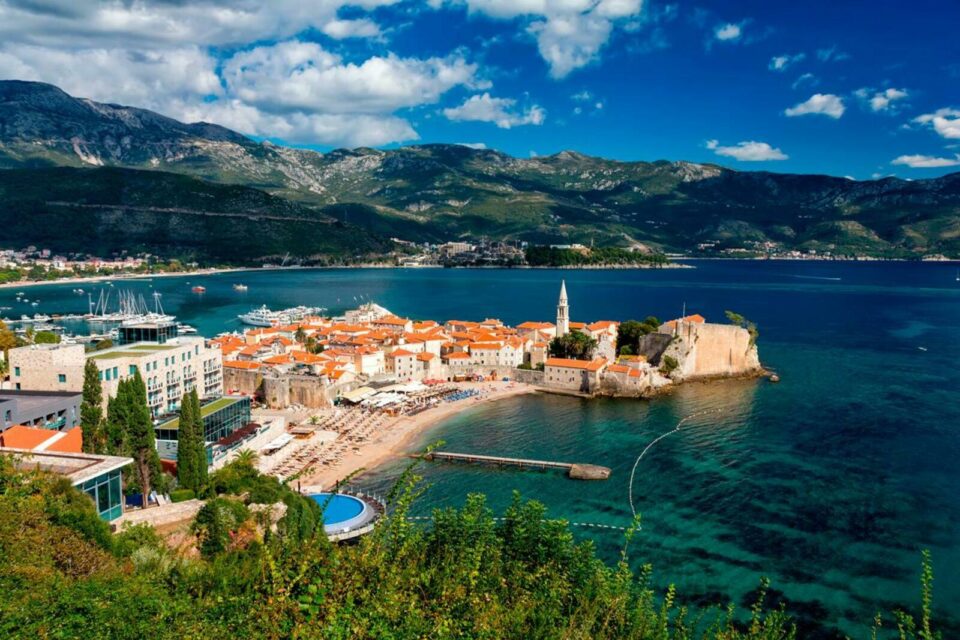Despite its small territory, Montenegro amazes with its landscape and climate diversity and irresistibly beautiful nature. Dense mixed and coniferous forests, mountain and plain rivers and lakes, mountain ranges, sea coastlines, and islands (14 in total) – all of these are in this tourist gem of the Balkan Peninsula. Along the Adriatic Sea stretches a 73-kilometer strip of beaches. Practically the entire country is an excursion platform for travelers and vacationers. This article presents the best resorts in Montenegro.
Budva

The ancient resort city, captivating every tourist with its Venetian appearance, is located on the Adriatic Sea coast. It’s impossible not to fall in love with it, as it has everything best for a seaside resort: luxurious pebble and sandy beaches, excellent hotels, amazing ancient architectural monuments, and incredibly beautiful landscapes.
The Mediterranean climate allows swimming in the aquamarine waters of the bay from May to October. A mountain ridge, covered with forest, surrounds the bay with a picturesque necklace. Strolling through the Old Town is a dive into romantic antiquity: cobbled narrow streets, miniature houses with tiled roofs, buildings of the Venetian era, the monolith of the ancient fortress wall – everything takes you back to the distant past.
The old Citadel, which served as protection from Turkish raids, is especially popular. In this beautiful place is the first library and an entertainment square. From the viewing platform of the upper fortress tier, breathtaking views of the bay and city open up. Water sports enthusiasts will find plenty of activities.
Becici
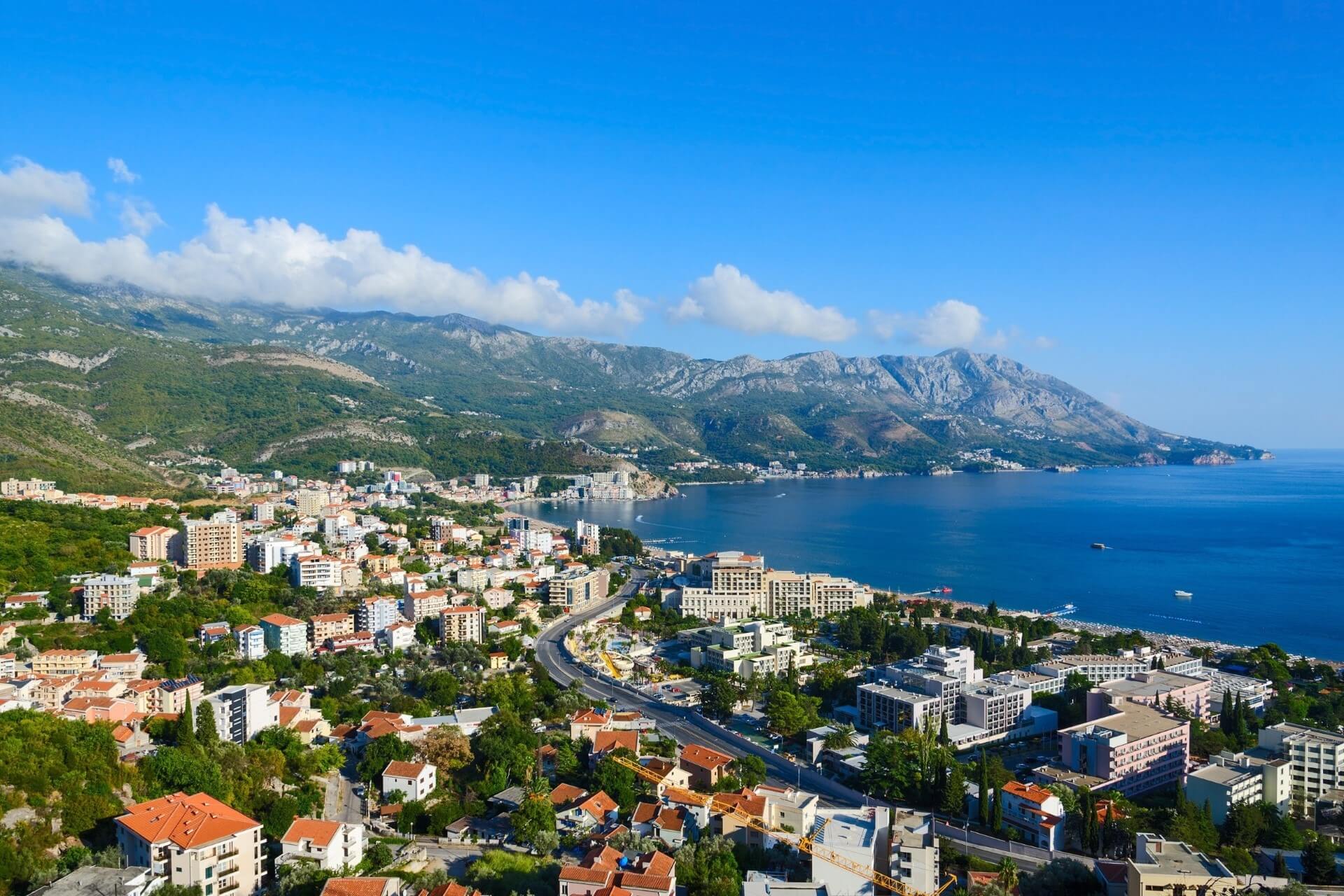
The resort gem among the coastal cities, Becici, is famous throughout Europe for its wonderful sandy-pebble beach, gently sloping into the water, and excellent tourist infrastructure. The city is connected to neighboring Budva by an underground tunnel, allowing you to reach the other resort in just a few minutes if desired.
Becici has two resort villages, extraordinarily picturesque and colorful, with preserved architecture of the Venetian era, white houses with tiled roofs, covered in brightly blooming oleanders and bougainvilleas. It’s worth coming here with children, as the calm sea, shallow coastal waters, and excellent beach facilities create ideal conditions for a family vacation. Various water sports equipment, catamarans, and scooters are available for rent.
The local water park, with its original design, boasts many thrilling attractions for tourists of all ages. Cozy restaurants and cafes prepare exquisite dishes from fresh seafood. Unforgettable walks along the wonderful shady alleys and resort attractions await you.
Petrovac
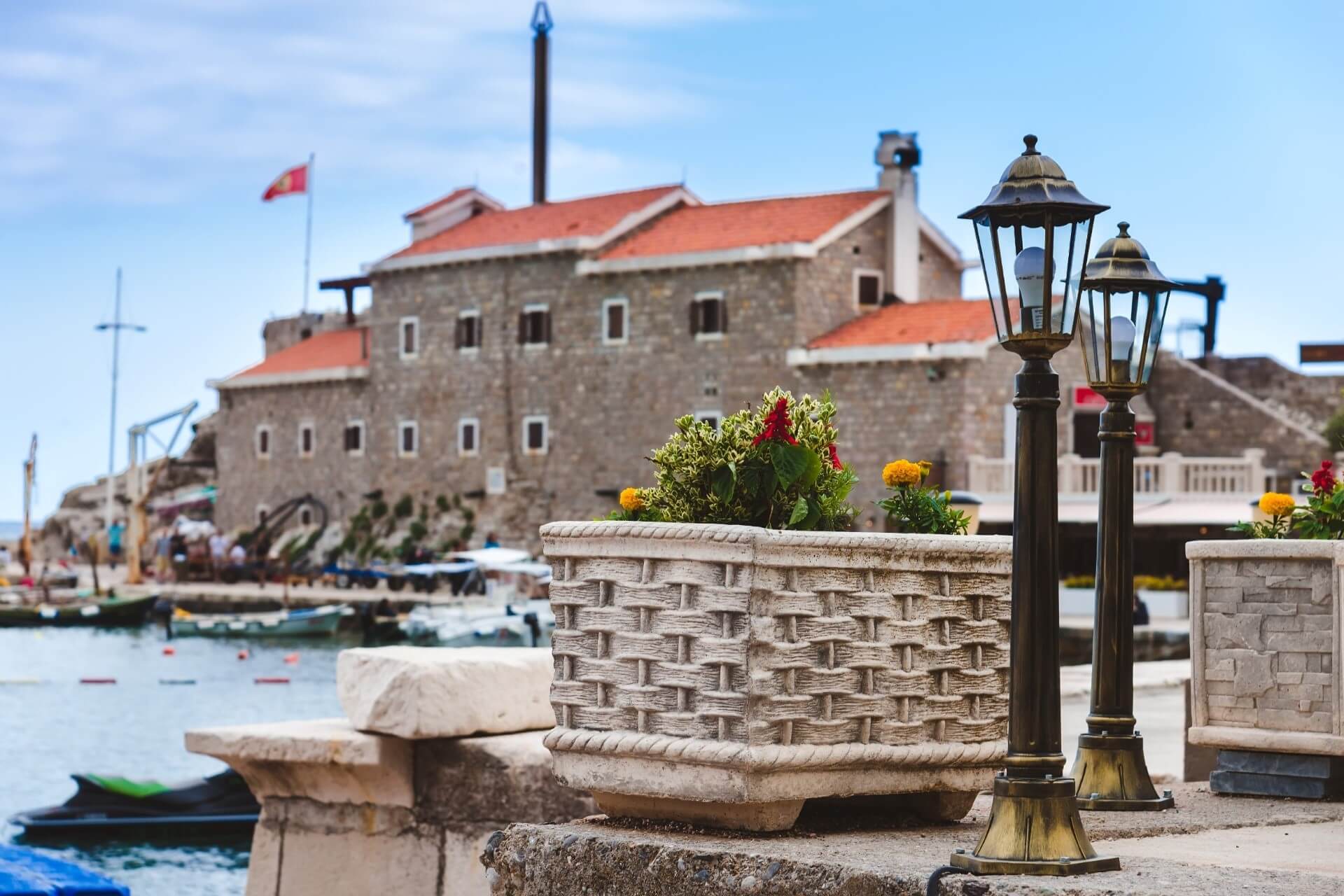
One of the most fashionable resorts, beautiful and great for a vacation at any time of the year. A spacious promenade, wide beaches, picturesque surroundings, and numerous walking routes create excellent conditions for a pleasant time.
There is no crowd of vacationers as in other seaside resorts, as Petrovac is not affordable for everyone. But those who can afford the expensive hotels and restaurants will experience heavenly bliss during their stay. The walks around the surroundings, revealing the mysterious charm of local nature and ancient structures, are worth it.
For example, walking along the Upper Promenade Šetalište, you can enjoy the stunning views of the sea and mountains, pass through authentic tunnels, incredibly picturesque cliffs, oak and pine groves. Petrovac beaches (Lučice, Buljarica) are great for swimming, sunbathing, relaxation, and meditation. From the observation deck of the old Castello fortress, otherworldly beauty of urban and sea panorama opens up.
Herceg Novi
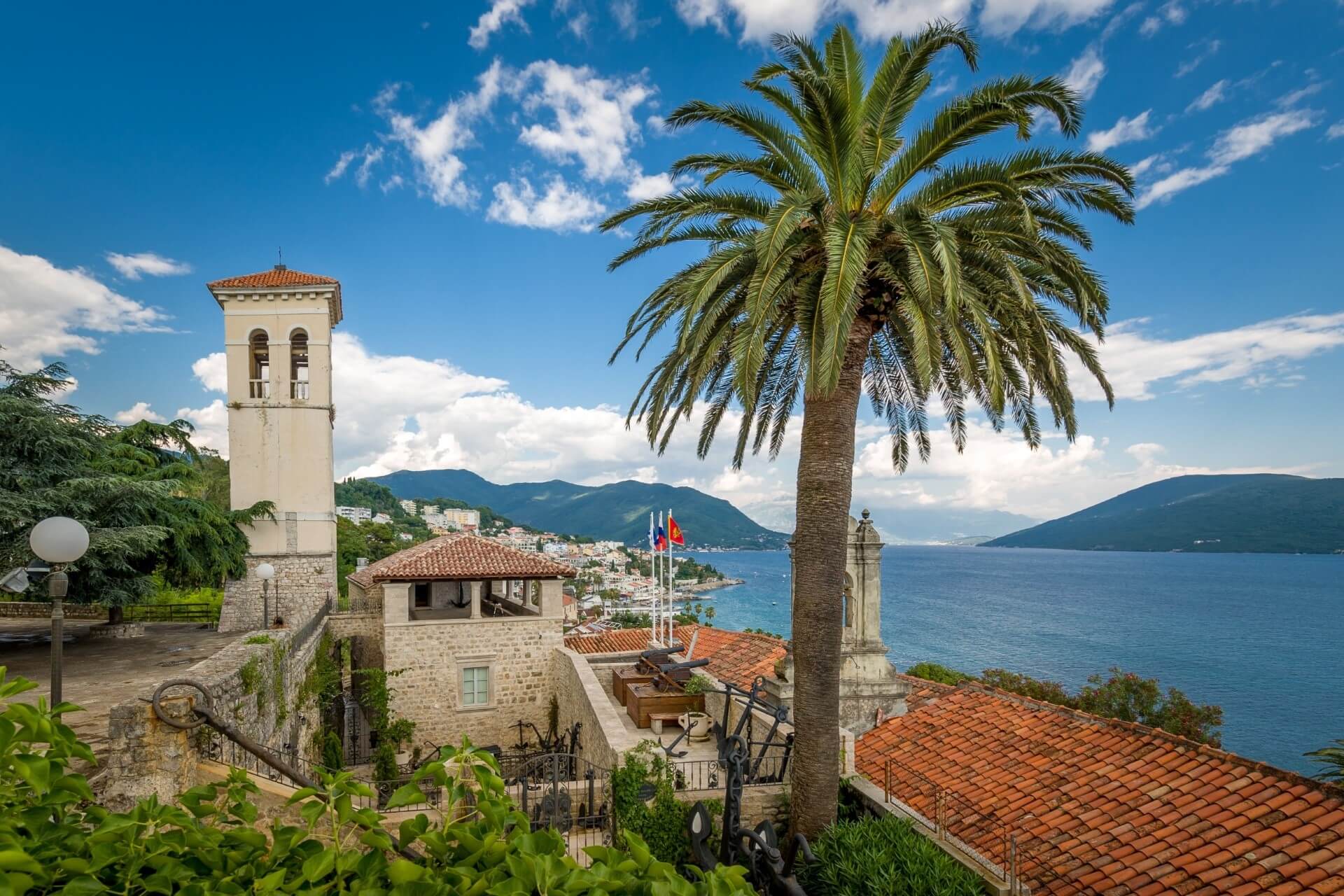
One of the greenest and most beautiful resorts on the Adriatic can be called the “green lungs” of the entire coast, and locals call it the “Garden of Montenegro.” The city is always good, but especially beautiful during the flowering of citrus and decorative trees. Tourists enjoy the ozonated air, crystal-clear sea, and tranquil atmosphere.
Although there are no sandy beaches (only pebble and rocky), this does not spoil the sea holiday at all. The amazing underwater world attracts many divers, and skiers frolic on the waves. An integral part of staying in Herceg Novi is excursions to interesting sites. The city, where ancient times and lively modernity intertwine, offers many positive emotions and unforgettable impressions. Everyone’s heart flutters during an excursion to the Old Town.
You can’t help but admire its central place – Bellavista Square, surrounded by authentic houses and picturesque palm trees, among which stands the cathedral of Archangel Michael. The ancient towers of the fortress wall (Bloody and Clock) remind of the times of valiant knights. A popular walking spot for tourists is the long promenade, incredibly picturesque and colorful, with mysterious stone tunnels (a legacy of the former railway).
Ulcinj

The southernmost and warmest city, bordering Albania, differs from other cities with its special charm, reflecting a mix of different styles and cultures. Here is the longest sandy beach in Europe, and flows the amazing Bojana River with banks covered in lush Mediterranean vegetation.
Olive and orange groves, medieval buildings, and modern high-rises make Ulcinj’s appearance very picturesque. The high tourist season at the resort is from April to November. Of course, in April, the water is still quite cool, but the air warms up to +24…+25 °C, allowing you to spend time on the beach. September is the time for ripening fruits and berries, lowering hotel prices, and increasingly comfortable weather – a true velvet season.
Summer months are characterized by hot sun, warm water, crowded beaches, and high prices for accommodation and other services. In October-November, there is an abundance of ripe citrus fruits, the sun warms during the day, and you can sunbathe and go on excursions.
Kotor

On the shore of the Bay of Kotor lies a unique city that has preserved its Venetian authenticity for four centuries when it played the role of a major trading and seaport. The history of Kotor remembers Roman legionnaires, Byzantine merchants, Greek, Bulgarian, and Serbian rulers.
Like a Phoenix, the burnt city rose from the ashes, and its current appearance is owed to the Venetians, who did a lot for Kotor’s development and strengthening. The undeniable main natural attraction of Kotor is the Bay of Kotor, reliably protecting the city from winds (and in the past, from pirates). A beautiful promenade, a port where white cruise liners dock, surrounds the shores with a picturesque necklace.
The Old Town is surrounded by an ancient fortress wall (4.5 km long, 2-16 m thick), which, when climbed, offers a view of all of Kotor in its glory. Three gates cut into the wall lead to the historic center, where the Armory Square, Clock Tower, Pillar of Shame, Arsenal, several Orthodox churches, and Catholic cathedrals are located. The Old Town is an oasis of medieval architectural and religious monuments preserved in their original form.
Perast
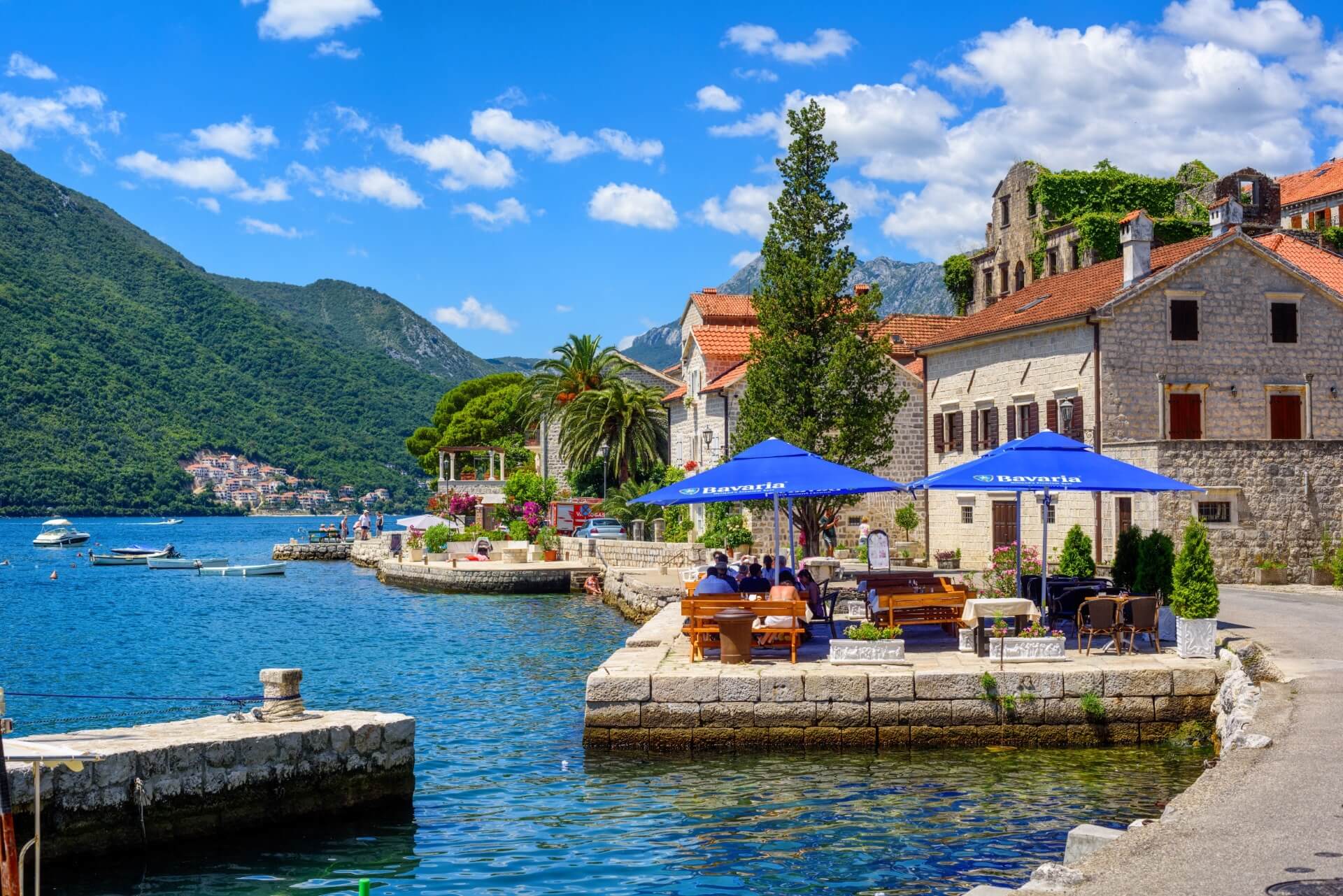
Opposite the narrow Verige (chain) strait lies the small ancient town of Perast – a city of sailors and shipbuilders. It was the latter that explained the city’s rapid prosperity in the 17th-18th centuries when its fleet numbered more than a hundred ships. Active construction began, with pompous palaces, luxurious cathedrals, and magnificent monasteries being built.
The city’s adornment – the Bell Tower of St. Nicholas Church, built in the 17th century – is a bright confirmation of the architectural bloom. There are no infrastructural beaches in the city, so everyone swims at the pier. Lovers of a calm, romantic, contemplative pastime will enjoy staying in Perast, despite its small size. Visiting local churches of St. Nicholas, Our Lady of the Rocks, and St. George fills you with spirituality and aesthetic feelings.
The monument to Admiral M. Zmajević, installed on Admiral Square, is impressive. Excursions to the island of St. George, where the Benedictine monks’ abbey is located, and to the island of Our Lady of the Rocks, where, according to legend, the icon of the Virgin Mary was found and the eponymous church was built, are interesting.
Tivat

The resort, named after (according to legend) the queen of the Illyrians (12th-1st centuries BC) – Teuta, is located among the irresistible beauties of the Tivat Bay coast. Looking at the surrounding landscapes, you start to believe in the divine origin of Earth and its boundless generosity towards these heavenly places.
It’s no coincidence that life thrived here for millennia, changing historical periods from the Illyrian times to Montenegrin times. Each era left its mark on Tivat and its surroundings, giving it a unique charm. A short isthmus connecting the city with the Island of Flowers allows you to visit the medieval Prevlaka Monastery (Serbian era) and see unique attractions, such as the Church of the Holy Trinity.
Visiting another island, Otok, introduces you to the ancient Jesuit monastery. The Venetian period is marked in Tivat by the 16th-century palace complex – the summer residence of the rulers. Walks in the Botanical Garden, founded during the Austrian rule, are very interesting. Beautiful beaches and a comfortable climate make tourists’ stay here pleasant and exciting.
Sutomore

Located in the center of the Adriatic coast, the resort of Sutomore is easily accessible for tourists – not far from two airports, with good roads and rail lines leading to it. To preserve the environment, entry by private cars is prohibited during the summer season (from June 1 to September 15).
The main tourist gem of Sutomore is the extensive beach, covered with a mixture of sand and small pebbles. The city of sea, sun, and comfortable weather pleases with moderate prices for accommodation in cozy private villas and family hotels and delightful nature. Beach holidays, participation in excursions to neighboring cities make the leisure of vacationers interesting and rich, and numerous restaurants offer delicious food.
Visiting ancient monuments: the Church of St. Thekla (12th century), the ruins of the Haj-Nehaj Fortress (15th century) – introduces you to the ancient history of these places. Trips to Cetinje, Petrovac, and Bar leave deep impressions and expand the acquaintance with the amazing country.
Sveti Stefan
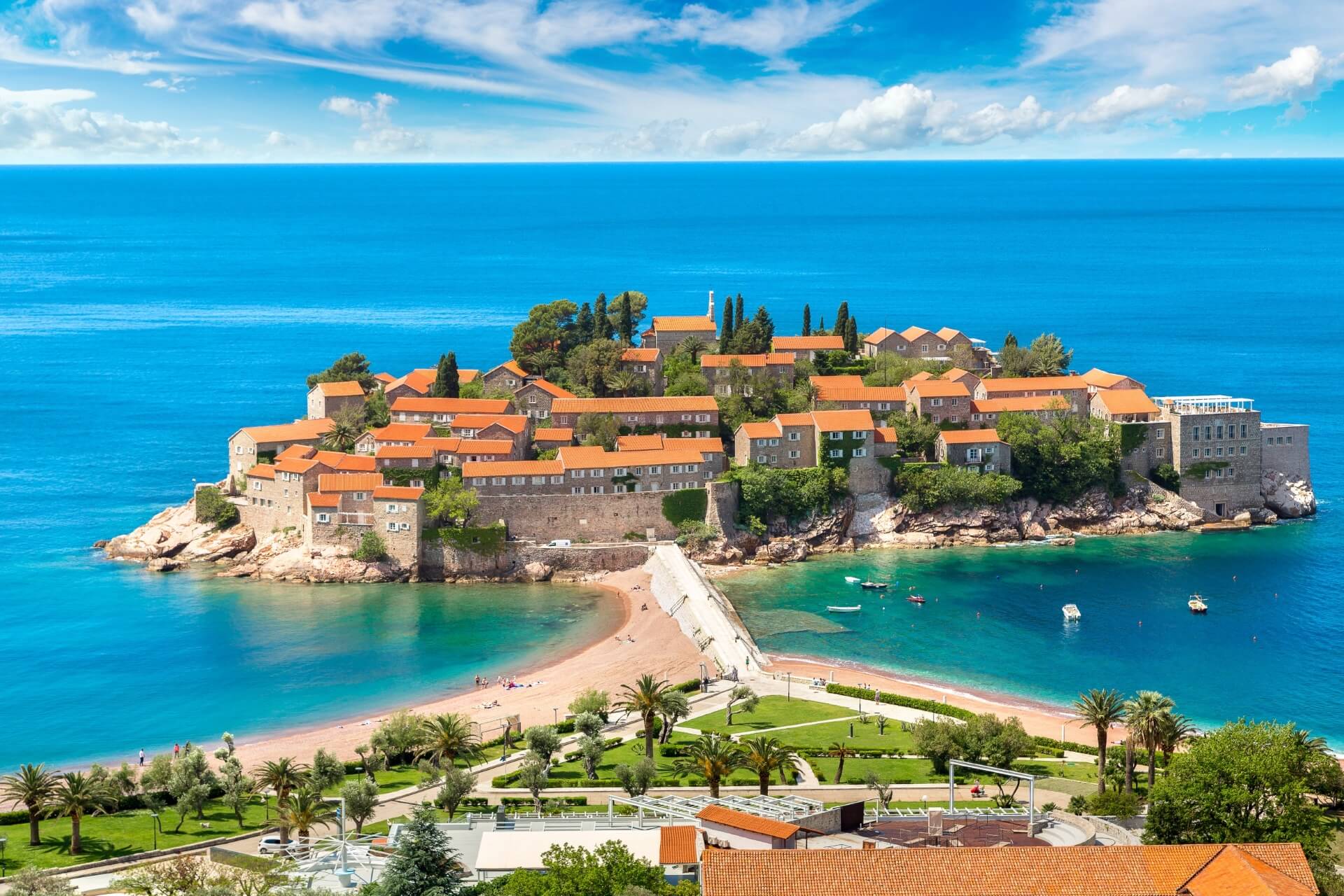
The respectable island resort, considered a place for wealthy people, is located on the island of Sveti Stefan, which has a rich history. The first building on it was the eponymous church built in 1442 in honor of the local villagers’ victory over an Ottoman detachment. During the Venetian rule, the island played a defensive role and later became an ordinary fishing village.
During socialism, luxurious hotels were built here, and the island turned into a luxurious resort that operated until the early 21st century. After the breakup of Yugoslavia, Sveti Stefan was abandoned for ten years, and in 2007 its revival began. Now the Aman Sveti Stefan island is a prestigious resort with 58 luxurious apartments, eight of which are located in the famous Villa Miločer (former royal residence).
Sea currents created a natural bridge between the island and the mainland, leading to the resort paradise. The exquisite beach, distinguished by perfect cleanliness and impeccable infrastructure, is mainly visited by hotel residents. Nearby is a free public beach accessible to everyone. The clear blue sea and sky, green mountain masses create a charming backdrop around the island.
Bar

The modern city of Bar is better known for its large seaport, but this fact does not diminish its merits as a popular resort where you can have a great time on the beaches and excursions. Freed from the Ottoman yoke at the end of the 19th century at the cost of almost complete destruction, the city was rebuilt closer to the sea.
In place of the old Bar remains an open-air museum – the Old Town, where excavations of the “Montenegrin Pompeii” are still ongoing. Visiting the ruins of the old city is a must in the cultural program of tourists, who have the opportunity to see the thousand-year-old ruins of architectural and fortification structures.
Here grows a huge number of olive trees, including the most ancient specimen, a 2,000-year-old olive tree. Bar is a resort for unorganized tourists who arrive here independently, so they book excursions to neighboring cities at local travel agencies or “set off on their own” around the surroundings.
Žabljak

The town with an unmelodic name, which grew from a small settlement where caravanserais stopped for the night, now has the status of a popular ski resort. Although Žabljak lacks highly developed infrastructure, local natural conditions attract thousands of skiers.
The pristine beauty of alpine meadows, dense coniferous forests, snow-capped peaks, mountain lakes and rivers, neat houses make even the most indifferent people stand in awe. Recently, a network of hotels and dining establishments has been actively developing. At the end of November, the favorable period for ski slopes and turns begins, lasting until the end of March when the snow cover reaches its maximum thickness.
The variety of slope heights allows both experienced skiers and beginners to ski. Very popular among them are the “Savin Kuk” slopes, where you can ski on alpine and cross-country skis, snowboards, and sleds. Ski sports virtuosos prefer the highest slope (2,010 m, an elevation difference of 800 m). Other ski trails are located lower (from 1,400 m) and have many branches.
Kolašin
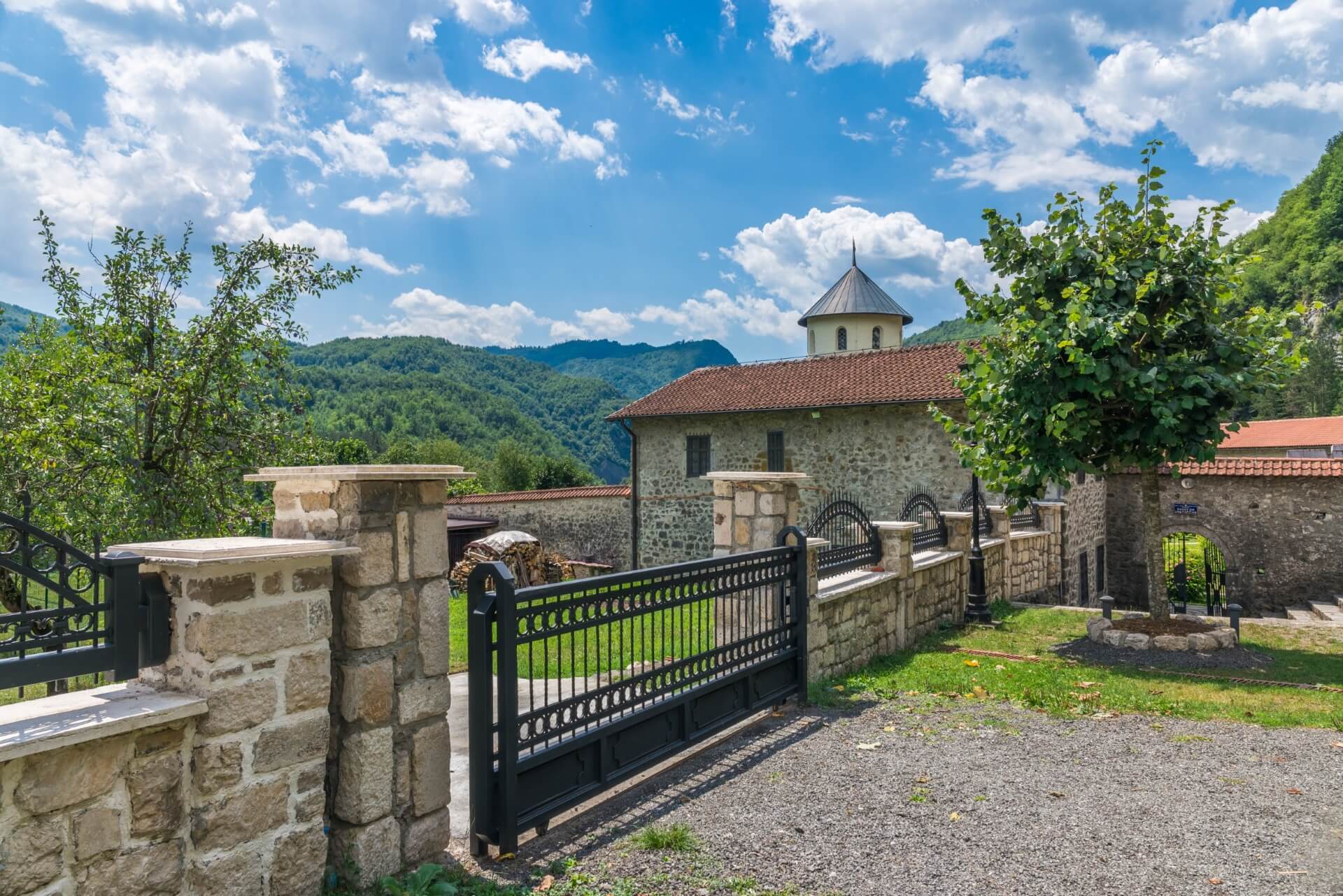
Once a haven for ancient Slavs, the town of Kolašin is surrounded on all sides by mountains, creating a virtually windless climate and providing many convenient ski slopes. Therefore, Kolašin is now a sought-after ski resort attracting tourists from all over Europe.
In winter, there is ample opportunity not only for skiers and snowboarders but also for those who simply enjoy a quiet, secluded rest among winter beauties. But in summer, the place is also crowded: mountaineers climb the slopes, reach peaks, and kayakers paddle the lakes. In the Bjelasica ski center, you can learn all kinds of winter sports. In the town and its surroundings are unique ancient monuments worth seeing.
Tourists actively visit the ruins of the Church of the Assumption of the Virgin (13th century), the Morača Monastery (750 years old), and the Local History Museum with interesting exhibits. Tourist trails lead to amazing mountain lakes, five of which are glacial, and the sixth, Biogradsko, is a true gem of this area, of seismic origin. All are located within a biosphere reserve with pristine nature, rich flora, and fauna.
Conclusion
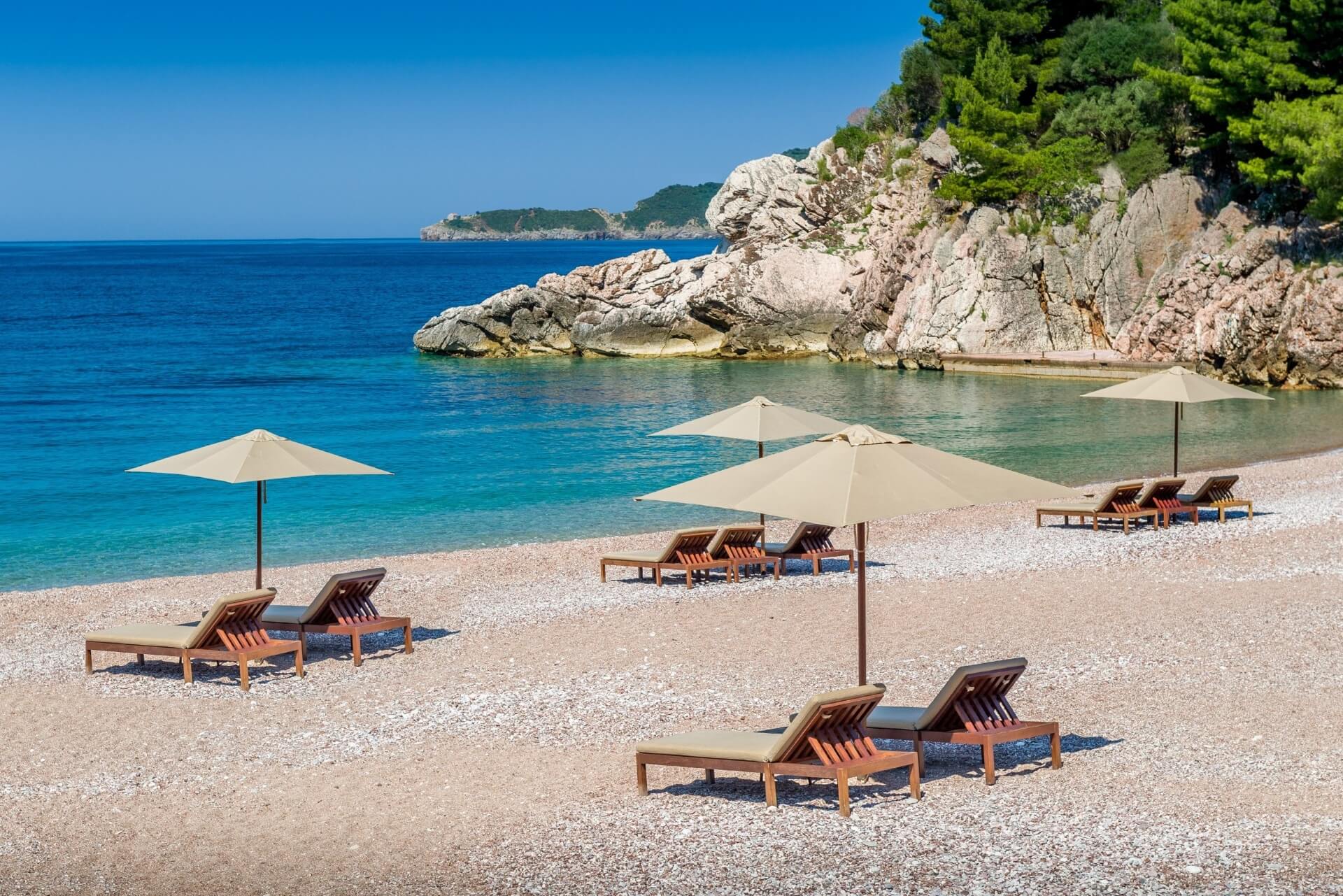
The entire 300 km coastline of Montenegro includes 117 beaches with various coverings: pebbles, sand-pebbles, and sand. Of course, walking barefoot on soft sand is convenient, and you can bury yourself in it and warm your bones. For those who prefer to relax on the sand, it is essential to know where the resorts with sandy beaches are. A few kilometers from Ulcinj is the famous Velika Plaža (Great Beach), 13 km long and 60 m wide.
It is covered with fine white sand, known for its healing properties, known to many Europeans. In the vicinity of Ulcinj, there is also the Queen’s Beach with unusually soft sand and amazingly clear water. Since it is surrounded by mountains, it can only be accessed from the sea. Wonderful sandy beaches are in the Bar area, on the shores of Lake Skadar, and the Budva Riviera (Morgen I II, Bečići, Kamenovo).
Rich nature, its stunning beauties, and relatively inexpensive accommodation and food make it attractive for a vacation with children. In major cities (Budva, Kotor), on Sveti Stefan island, the cost of rest is significantly higher than in small resorts, towns, and villages. Among them, it’s worth choosing the best beach conditions in terms of safety and convenience. When planning to travel with children, it’s best to book a hotel or guesthouse with an all-inclusive system to save time searching for a suitable restaurant or eatery.
Good conditions are offered by the resorts of Bar, Tivat, Podgorica, and Herceg Novi, where many affordable hotels, guesthouses, boarding houses, private villas, and various dining establishments are open. The local cuisine is of high quality. In the vicinity of these cities are cozy resort villages with all the necessary infrastructure for children.
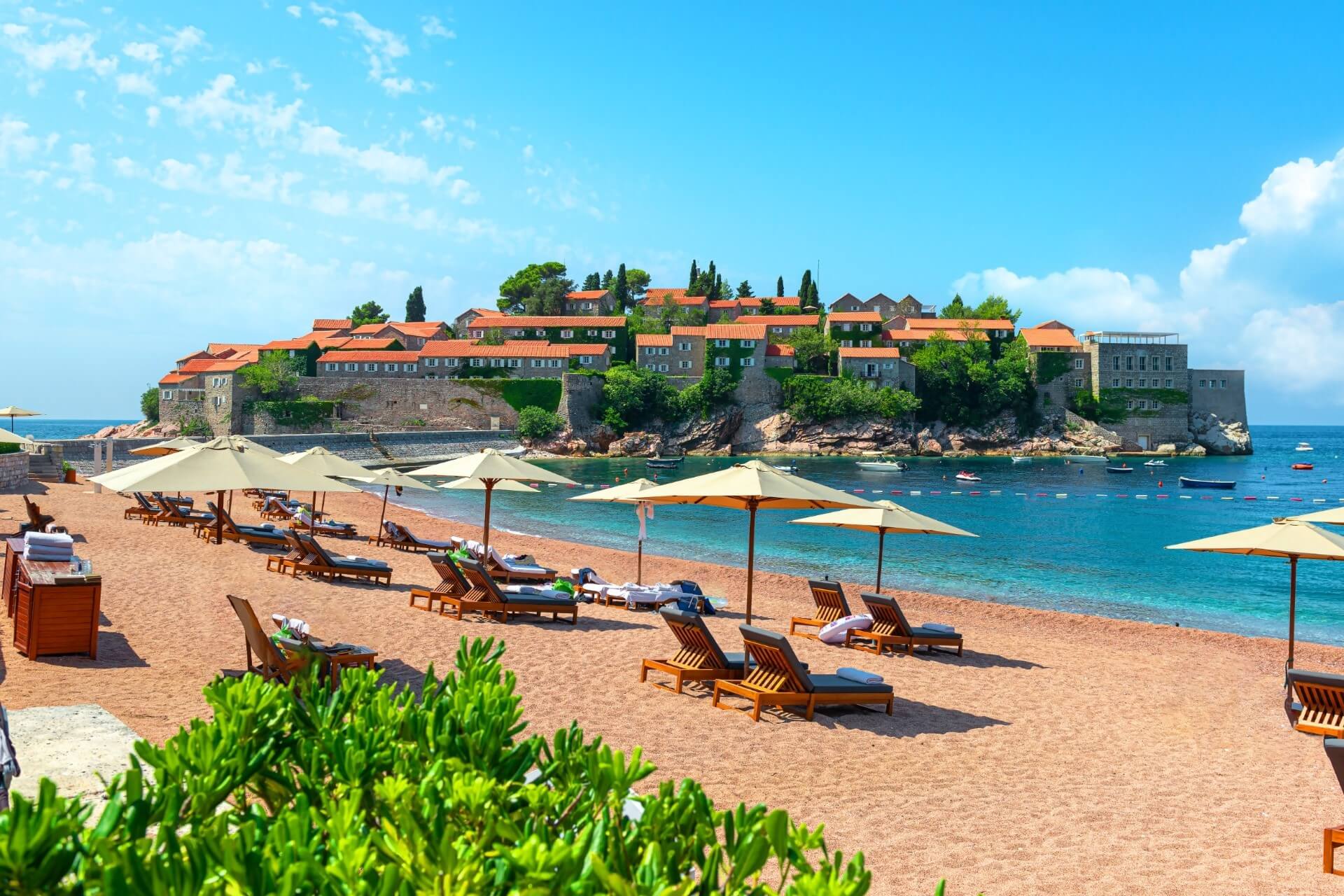
As with many Mediterranean resorts, the bathing season on the Montenegrin coast begins in May and ends in October. The exception is Kotor, where the bathing season starts at the end of April and ends at the end of November. This is the hottest place in the country: the water in the Bay of Kotor is the warmest, and the mountains protect it from the northern wind.
In May, it’s already quite warm, but mass bathing hasn’t started yet because, although the air warms up to +23…+24 °C during the day, the water is still quite cool, as in October. June delights with daytime air temperatures from +25 to +28 °C, and the sea warms up to +22…+23 °C. July and August are the hottest periods. September is the velvet season – there is no summer heat, but the sea is warm, and the market is abundant with exotic fruits, various berries, and vegetables.

